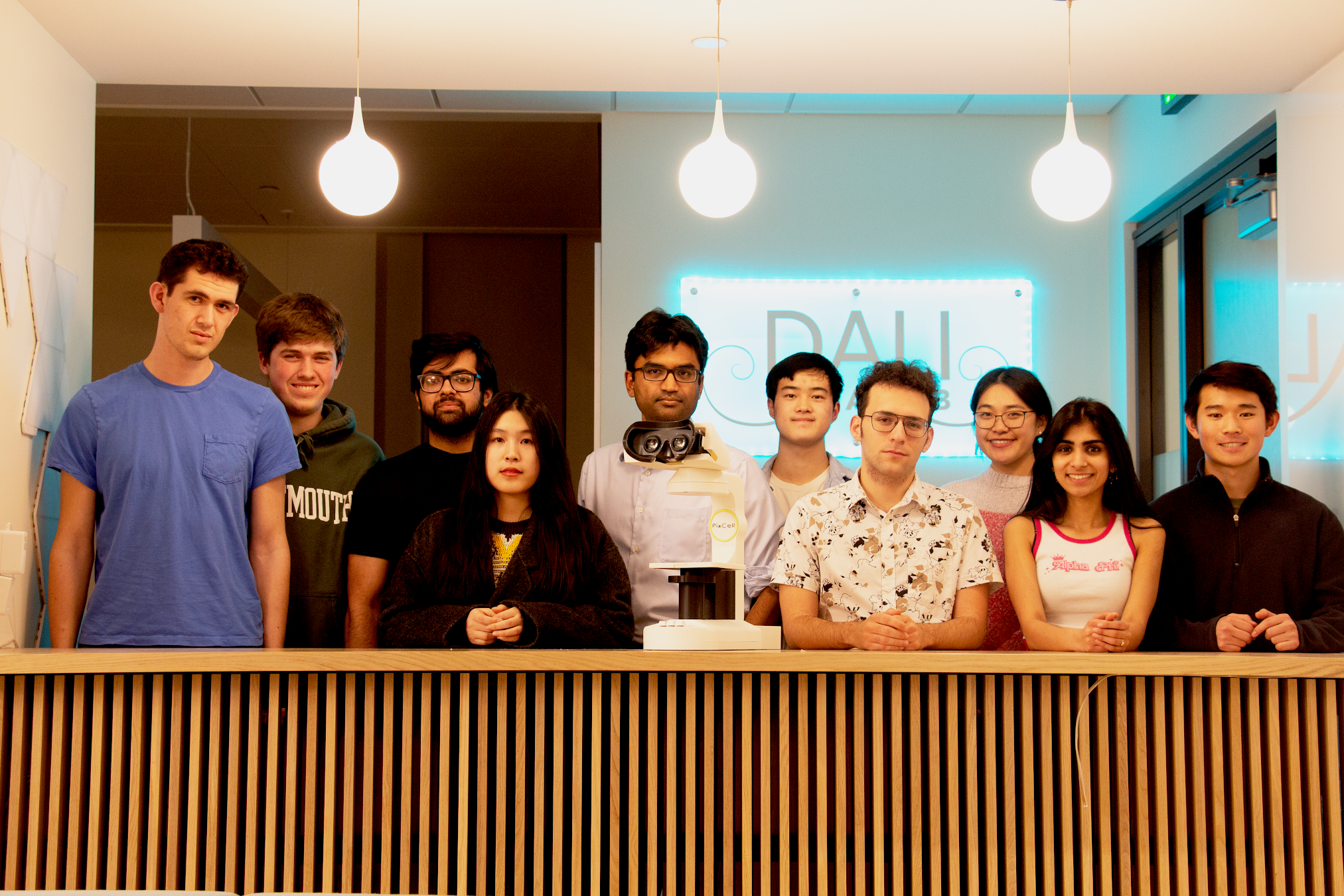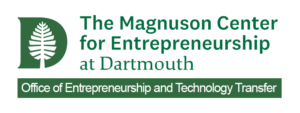DALI Lab’s SmartScope Marries Physical Design and Technology in Unique Project
The microscope has the potential to revolutionize cancer diagnostics and treatment.

As a pathologist at Dartmouth Hitchcock, Dr. Aravindhan Sriharan has learned firsthand that cancer diagnosis has been unable to utilize the benefits of digital imaging, because evaluating patient samples on a computer takes four to five times longer than examining slides under a microscope.
“Pathology has been slow to digitize because doing this on a screen is extremely cumbersome,” said Sriharan, who is an assistant professor of pathology and laboratory medicine at the Geisel School of Medicine.
By avoiding digital images, the field of pathology is unable to utilize high-resolution imaging, or the burgeoning advancements of artificial intelligence in diagnostics.
Sriharan knew there had to be a way to bridge the divide between technology and the microscope, the tool that pathologists are most comfortable working on. About 18 months ago he approached the DALI lab, hoping that students there could help bring his vision into reality. For DALI students, the project was a rare chance to join together physical design with AI technology and user experience design. That combination immediately caught the attention of Lauren Goyette ’23.
“The goal was to create a device that mimicked the functionality of a computer, with digital images and AI, with the form factor, ergonomics and comfort of a traditional microscope,” said Goyette, who was the designer for the project last year.
Although they were intrigued, at first students didn’t fully understand the problem that Sriharan wanted to solve. So, the doctor demonstrated his work flow.
“I saw how quick he was with the physical microscope and how clunky the computer was,” Goyette said.
After that, Goyette and the design team worked closely with Sriharan, often meeting multiple times a week. They utilized the Cable Makerspace, next door to the Magnuson, which has recently joined the Magnuson Center portfolio of spaces for builders with access to 3D printers, laser cutters, and other computational fabrication tools.
The final design looks and functions like a traditional microscope, but utilizes digital images. Pathologists peer into the scope and manipulate the image using a dummy slide, rather than a mouse. Because the process is more familiar and ergonomic, it’s more efficient than analyzing digital slides on a computer monitor. In addition, the development team is now working on integrating AI software into the SmartScope, which will enhance the diagnostic capabilities and allow doctors to recommended tailored treatment to cancer patients. The SmartScope was a recent finalist for the South by Southwest Student Innovation Prize, and has received a host of other national awards, including an honorable mention for the DEBUT Prize given by the National Institutes of Health.
“This could really change people’s lives by decreasing the time for diagnosis and improving patient care,” Goyette said. “It was really nice to see the direct implication of our work.”
Today, Goyette is getting her master’s degree in engineering at Princeton. She feels that working so closely with a doctor in a way that is uncommon for undergraduates helped give her a leg up as she decided what to do after Dartmouth.
“The schools I applied to and jobs I applied to really appreciated that,” she said.
Lauren Kidman ’25, joined the SmartScope project as designer last fall. She’s been interested in SolidWorks, an engineering software design program, for years, and felt that the SmartScope gave her the chance to apply knowledge from her engineering classes in a real-world setting.
“You learn a lot of theories in your classes, but the appeal of engineering is applying that knowledge and making a product,” she said. “This has given me the practical experience of building from the ground up.”
Sriharan, she said, presented the DALI students with a tall order: utilize revolutionary technology and many features, but fit them into the framework of a traditional microscope. The doctor has compared the challenge to creating computer functionality in tiny smart watches.
“It was like a puzzle,” Kidman said, fitting wires, lasers, and other tech into the allotted space. Because of the physical design component, “there’s no other project like this in DALI,” she said.
Alex Carney, a first year PhD candidate studying quantum computing, had no idea that DALI would consider a physical project before he became involved with the SmartScope last year. But like Kidman and Goyette, he was enthralled by the idea.
“Anything where I could build physical hardware and use my coding knowledge, that is for me,” said Carney, who is the developer for the project.
One of the most rewarding moments for Carney was watching pathologists use a prototype of SmartScope.
“It’s such an amazing thing to see these doctors spouting out these Latin terms for different diagnoses, using our device to pan around the image,” he said. “I had little shivers every time.”
DALI has now developed five prototypes of the SmartScope. A new team of nine students, including some who are experts in data science, are moving forward with AI integration. As Sriharan begins clinical research on the SmartScope and considers how to bring the technology to market, he’s driven in part by the dedication and enthusiasm of the DALI students.
“The amount of talent that you get is really remarkable. The students have a level of enthusiasm with the project that really helps when you’re the founder,” he said, crediting Tim Tregubov, director of DALI Lab, and Lorie Loeb, faculty director of DALI, for assembling a tremendous team.
“DALI lab has been extraordinary in this. I’m not sure how Tim and Lori consistently put together student teams of such extraordinary talent and maturity, but they do. And, we are all better off as a result.”
The following students have worked on the SmartScope Project: Andy Kotz ’24, Ziray Hao ’23, Atharv Agashe ’25,Elizabeth Frey ’24, Andy Xu ’26, Henry Schieble ’26, Lauren Goyette ’23, Victor Muturi ’23, Joy Miao ’23, Daniel Lubliner ’25, Annie Qiu ’24, Emily Chen ’24, Ulgen Yildirim ’24, Jorie MacDonald ’25, Neo Cai ’25, Nitya Agarwala ’25, Sair Shaikh ’26 and Joye Syu, a graduate student. Advaita Chaudhari ’24 and Jason McFadden ’23 have helped coordinate clinical research and submit applications for competitions and prizes.
The SmartScope has received the following accolades:
- National Institutes of Health – DEBUT prize – Honorable Mention
- South by Southwest Student Innovation Prize – Finalist Team
- Good Design Award, Chicago Athenaeum - Awardee
- 2ndAnnual Digital Therapeutics Summit at Dartmouth College – Poster Competition, First Place
- American Society of Dermatopathology 2023 Annual Conference – Platform Presentation
- International Society of Dermatopathology 2024 Annual Conference – Accepted, Poster Presentation
- United States and Canadian Academy of Pathology 2024 Annual Conference – Accepted, Poster Presentation

